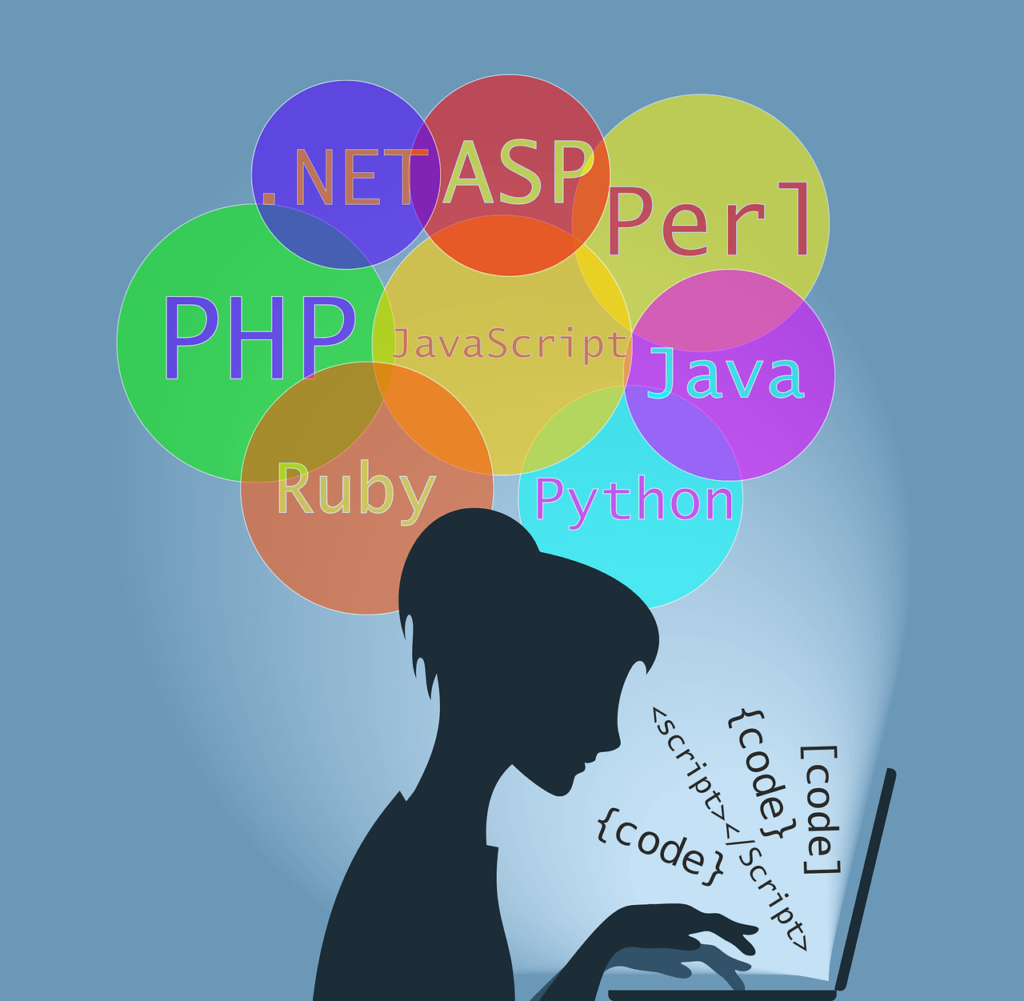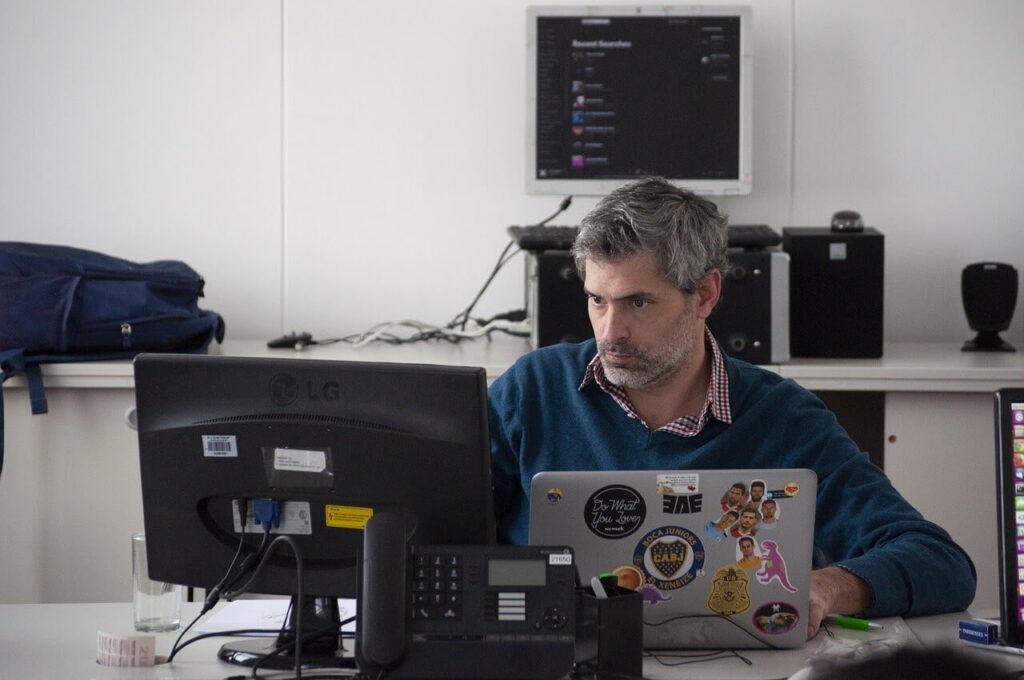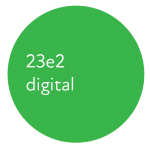© 23e2 Business Services Inc. | Working With 3rd Parties
Top Programming Languages for 2024
In our digital world, knowing coding languages is super important for web work. But there’s so many, where to start? We’ve got you covered! We’ve found the best languages for different web tasks, and listed it all here. Perfect for coding beginners or old hands, we’ve outlined the good and the bad of each language. Have a read and stay on top of the web game!

Python
Python is a general-purpose coding language, this means that it can be used for a wide variety of applications which include server-side web and mobile app development, Desktop apps and software development, processing big data and performing mathematical computations, as well as writing system scripts. Python is considered a universal language due to its ubiquity and ability to run on nearly every system architecture. Although being a complex, object-oriented programming language, python is beginner friendly and very easy to learn.
Java
Java is a object oriented programming language as well as a general-purpose programming language, which means that all compiled code can run on any platform that supports Java. Some Java’s applications are banking, retail, stock market, android dev, and more. Java is an ocean of opportunities with its wide range of tools which range from web development like javascript to frameworks like spring. Java is a dynamic language which means that it has the ability to an evolving environment by using dynamic memory allocation, lowering the memory wastage and optimizing performance.
JavaScript
JavaScript is a client-side scripting programming language that lets you create, control, and implement complex dynamic features on web pages. These features include 2D/3D animated graphics, scrolling video, interactive maps, autocomplete suggestions, and interactive forms. JavaScript is a client-side language which means that it is downloaded onto a users computer and then processes. Some uses for javascript are: Adding interactivity to websites, Developing mobile applications, creating web based games, and back-end web development.
Go
GO is a compiled programming language which was designed at Google. The two major implementations of GO are Google’s self-hosting and gccgo which is a GCC frontend. The syntax is small compared to other languages and is easy to learn, which means that it’s very clean and easy to read. Some applications you can make with go are peer to peer networking, database access, web based micro services and more.
Ruby
Ruby is a popular dynamic open source programming language that focuses on simplicity and functionality. It is a completely object oriented language, this means that everything, even the most basic data types, are objects. Ruby is also a very flexible language, allowing users to make modifications to part of the language for specific use. Ruby is mainly used for front-end and back-end web development, however, it is a general purpose language which means it has various other applications including data analysis, prototyping, and proof of concepts.
Dart
Dart is a client side programming language for apps on multiple platforms. Dart was developed by Google and is used to build web, server, desktop and even mobile applications. The language itself is an object oriented and class based language with syntax similar to the language C. Being a similar language to javascript, Dart is a relatively simple, modern and highly efficient language to work with.
PHP
PHP (Hypertext Preprocessor) is a general-purpose scripting language that is for server side web development including static and dynamic websites as well as web applications. PHP is server side, which means that it can only be interpreted by a server that has PHP installed, rather than locally on a user’s computer. PHP is a beginner friendly language but also provides advanced features for professional programme rs. PHP code can be embedded inside of html code, or it can be used with various other applications such as web frameworks, web template systems, and web content management systems.
Scala
Scala is a general purpose programming language that supports object oriented and functional programming. Scala was designed based to correct the criticisms of Java. Some of these features are features of functional programming such as scheme, standard ML, and haskell, including currying, immutability, lazy evaluation, and pattern matching.
HTML
HTML stands for Hypertext Markup language, it is the standard markup language used for developing web pages. HTML allows users to create and structure the content of webpages, this includes sets of paragraphs, links, images, or datatables. HTML ensures the proper formatting of web pages, without HTML, a browser would not know how to display or load the elements of a page. CSS (Cascading style sheets) can be used in combination with HTML to add style and change the appearance of a webpage.
Kotlin
Kotlin is a general purpose programming language with type inference. Kotlin is designed to interact and cooperate with Java fully, which means that the Kotlin libraries are dependent on the Java class library. In general Kotlin can be used for any kind of development whether it be client side, server side or anything else. But in May 2019, Google announced that Kotlin is the most preferred language for Android development, ever since then Kotlin has been used for Android development with the use of Android studio.
Rust
Rust is a multi-paradigm programming language that focuses on speed, memory safety and parallelism. Rust helps bridge the gap between high level ergonomics and low level control programming by providing users with great programming experience as well as the control over low level features such as memory management without the hassle that is traditionally associated with it.
Processing
Processing is an open-source graphical library and IDE built for visual design and digital art communities with the intentions of teaching people who don’t know how to program the basic principles of programming. Processing uses Java with simplifications and a graphic user interface for it to be easier to use.

C#
C#, pronounced C Sharp, is a general purpose object oriented programming language developed by Microsoft as a hybrid of C and C++. C# is designed to make it easy for businesses to create software developments and increase productivity by using one single programming language. C# provides developers with a flexible and secure way to develop robust applications. C# also provides functionality for all sorts of modern day developments such as web, mobile and app development.
Delphi
Delphi is a programming language and an IDE for application development of desktop, mobile, web and console applications. Delphi includes a code editor, a visual designer and an integrated debugger and more features. The language that Delphi uses is the pascal-based programming language, more specifically called Object Pascal. The visual designer has used visual component libraries for Delphi.
Perl
Perl is a family of programming languages that are similar to the C language. Peal consists of two high level general purpose, interpreted, and dynamic programming languages called Perl 5 and Perl 6. Perl provides a combination of features from languages like C and shell scripts which gives it the ability to execute large sets of commands. Along with features similar to C, perl also has elements from Awk and Sed, which are used to manipulate text, as a result, Perl is often used for creating common gateway interfaces.
Elixir
Elixir is a general purpose programming language that runs on the Erlang virtual machine (BEAM). Elixir shares the same abstractions for building fault-tolerant applications like Erlang. It provides many tools and an extensible design and is also supported by compile-time metaprogramming. At the end of the day elixir is a scalable and very reliable language to program in.
F#
F# is a general purpose, cross-platform functional programming language for the .NET platform developed by the Microsoft Research team. F# is designed to give users the ability to tackle complex computing problems with simple, maintainable and robust code rather than focusing on the “noise” of programming details, such as curly brackets and semicolons. F# is a superset of C#, this means that F# can do everything that C# can do.
Lua
Lua is a multi-paradigm programming language designed for embedded use in softwares. Lua is cross platform because the interpreter of compiled code is written in a language familiar to C. In general Lua is a powerful and fast programming language that is easy to learn and use and to embed into your applications. It is designed to be a lightweight scripting language and used in all sorts of applications from games to web applications and even image processing.

Source: IEEE Spectrum
Apache Groovy
Apache Groovy is a powerful dynamic, and object oriented programming language for the Java platform. It takes advantage of the static java compiler and is purely a Java Virtual Machine (JVM) based language. Groovy is a static and dynamic language that consists of features similar to Python, Ruby, PHP, and Smalltalk. It is a superset of Java, this means that it contains all of Java’s features and capabilities and it also offers other features such as DSL support, closures, and dynamic typing.
Haskell
Haskell is a general purpose, purely functional programming language. Haskell was developed to be used for teaching, research and industrial application. It has also derived numerous modern programming languages features such as type classes. Haskell is worth learning because of the fact that it is purely a functional programming language and the skills from learning Haskell are useful to have even though in the future Haskell might not be a relevant language.
Clojure
Clojure is a dynamic, general-purpose, purely functional programming language. Clonjure combines the interactive development of a scripting language with the efficient and robust infrastructure of multi-threaded programming. Clojure is a dialect of Lisp, this means that Clojure treats code as data, and provides a set of immutable and persistent data structures to facilitate the development of more robust, clean, simple, and fast programs.
Ocaml
Ocaml, otherwise known as Objective Caml is a general purpose, multi-paradigm programming language. The Ocaml language was initially used to develop applications that involve symbolic computation, automatic theorem provers, compilers and interpreters etc. Now it is used to develop softwares in many other application areas. Some companies that use Ocaml are Microsoft, Citrix, Jane Street Capital, SimCorp and more.
CoffeeScript
CoffeeScript is a programming language that compiles JavaScript. CoffeeScript adds syntax inspired by Python, Ruby, and Haskell to JavaScript in order to make the code more readable for developers. CoffeeScript compiles into Javascript on executions and reduces the amount of code by 33%. CoffeeScript is also supported on Ruby on Rails.
Racket
Racket is a general purpose, multi paradigm programming language. The platform is designed to be for programming language design and implementation. Racket can be used to refer to the modern programming languages and the sets of tools supporting them. Racket is very similar to Haskell when it comes to what the language can do and how the language does it. Like Haskell, Racket is used for computer science education and research.

There are always ways that code can improve and you’ll notice updates on these languages happening over time. But if you know the basic building blocks it’s easier to keep up with the competition. Plus the popular languages like Java and Python will still be relevant for a long time to come. When you learn a versatile language that can be used in any programming situation it can only help you grow as a coder. Our selection of languages can suit a number of needs whether you need to learn to focus on the layout or the function of websites with your code. When you spend your time and energy learning something why not have it be something useful. Whether you want to front end or back end code you’ll find the perfect programming language that can get the job done.
FAQs About Top Programming Languages
Python, JavaScript, and Java continue to dominate demand in the future due to their widespread use in machine learning, web development, and backend systems, respectively. Additionally, languages like Rust and Go could see increased demand due to their applications in systems programming and concurrent computing.
Python would be a good choice due to its simplicity, versatility, and growing use in data science, AI, and machine learning.
C and Java have shown incredible longevity due to their widespread adoption, historical significance, and continuous updates. They are likely to remain relevant for a long time.
Yes, Java is expected to remain in demand in 2024 due to its robustness, versatility, and massive application in enterprise-level solutions.

